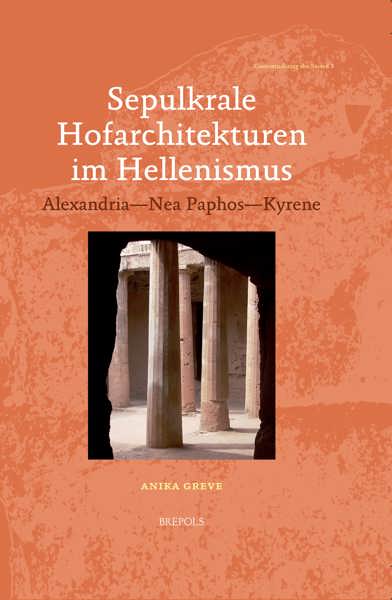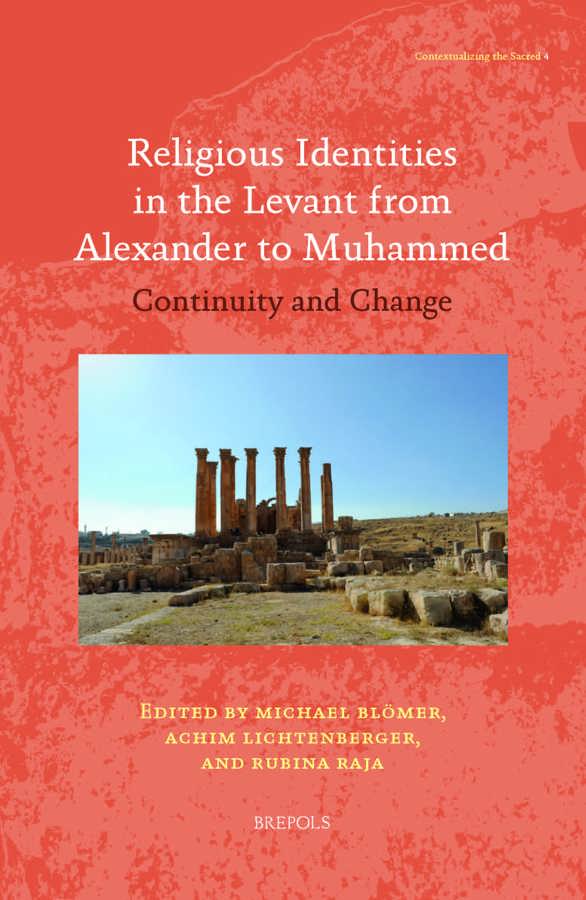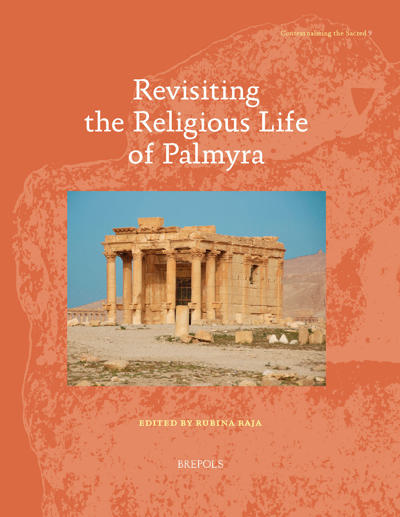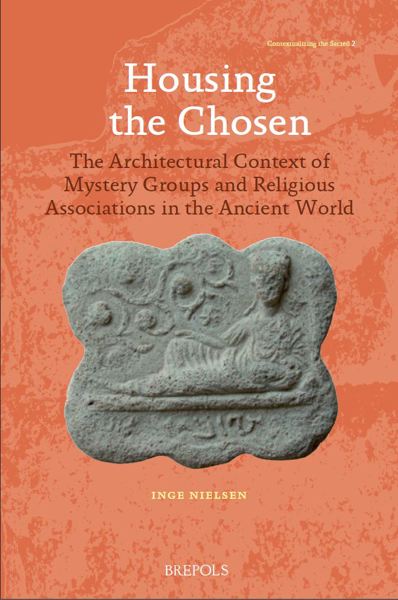
Religious Identities in the Levant from Alexander to Muhammed
Continuity and Change
Michael Blömer, Achim Lichtenberger, Rubina Raja (eds)
- Pages: xxxviii + 424 p.
- Size:216 x 280 mm
- Illustrations:294 b/w, 12 Maps
- Language(s):English, French, German
- Publication Year:2015
- € 160,00 EXCL. VAT RETAIL PRICE
- ISBN: 978-2-503-54445-8
- Paperback
- Available
Bringing together material from a range of disciplines related to the nature and development of religious identities in the Hellenistic and Roman Near East this volume gives new insight into the latest research on the topic.
"Le volume, très soigné et richement illustré, propose en définitive une série très appréciable de « case studies » qu’historiens et archéologues pourront mettre en résonance avec leurs propres terrains d’enquête, y compris au-delà de l’espace levantin." (Corinne Bonnet, in: Bryn Mawr Classical Review 2016.04.35, en ligne en ligne http://www.bmcreview.org/2016/04/20160435.html)
"Unbeschadet dieser formalen Mängel ist das Buch eine Fundgrube und angesichts der fortdauernden historischen Katastrophe in Syrien eine umso wertvollere Dokumentation (...)" (Thomas Staubli, in: bbs 2.2017 http://www.biblische-buecherschau.de/2017/Bloemer_Identities.pdf)
"Insgesamt bietet der Band ein Panorama von neuester Forschung zu nur scheinbar altbekannten Orten, die sich allesamt intensiv mit dem Aspekt von Kontinuität und Wandel in der nahöstlichen Kultpraxis auseinandersetzen." (Konstantin M. Klein, in: Historische Zeitschrift 304, 2017, p. 747-749)
This volume addresses questions of continuity and change in the religious life of the Levant between Alexander’s conquest of the Middle East until the end of the Umayyad period, a topic which has received growing attention over the last decade within the fields of ancient history, archaeology, philology, and religious studies. The volume pulls together the efforts of scholars from all of these fields, and its central concerns include the representations and expressions of religious identity in sacred architecture, iconography, and texts. These representations and expressions are explored through literature, inscriptions, and iconography, and though the architectural as well as the functional development of sanctuaries, churches, and mosques. The volume includes papers on themes such as definition, creation, dissolution, and interconnection between sacred sites, as well as access and audience. These developments are examined through the lenses of aspects of continuity and change in material and literary culture.
With a point of departure in the development of urban, sub-urban, and extra-urban sanctuaries, churches, and early mosques, as well as their associated cults and religions, the contributions in this volume explore the shaping and development of the religious identities of individuals, groups, and societies, and assess how these categories of religious identity were interrelated and shaped by a variety of circumstances. The volume aims at underlining the importance of interdisciplinary studies to the comprehensive understanding of this complex field and at opening up discussions of methodological and theoretical approaches which can be used across these disciplines.
Introduction
Continuity and Change: Religious Identities in the Levant from Alexander to Muhammad — MICHAEL BLÖMER, ACHIM LICHTENBERGER and RUBINA RAJA
I. General
Les signes du changement: réalités et faux-semblants — MAURICE SARTRE
‘Familiar Strangers’: Gods and Worshippers away from Home in the Roman Near East — TED KAIZER
Gymnasia: Aspects of a Greek Institution in the Hellenistic and Roman Near East — FRANK DAUBNER
The Assembly Rooms of Religious Groups in the Hellenistic and Roman Near East: A Comparative Study — INGE NIELSEN
‘The God who is called IAO’: Judaism and Hellenistic Mystery Religions — LESTER L. GRABBE
Conversion, Apologetic Argumentation and Polemic (amongst friends) in Second Century Syria: Theophilus’ Ad Autolycum — JAKOB ENGBERG
Politicizing the Religious: Or How the Umayyads Co-opted Classical Iconography — NASSER RABBAT
II. Northern Syria
The Re-emergence of Iron Age Religious Iconography in Roman Syria — GUY BUNNENS
Religious Continuity? The Evidence from Doliche — MICHAEL BLÖMER
The Jebel Khalid Temple: Continuity and Change — GRAEME CLARKE
A Laodicean on Mount Casius — JULIEN ALIQUOT
Defining New Gods: the Daimones of Antiochus — MARGHERITA FACELLA
Images of Priests in North Syria and beyond — MICHAEL BLÖMER
Perduration, Continuity and Discontinuity in the Sanctuary of Atargatis in Hierapolis (Syria) — ALEJANDRO EGEA
The Transformation of a Saintly Paradigm: Simeon the Elder and the Legacy of Stylitism — VOLKER MENZE
III. The Desert and Mesopotamia
Babylon in achaemenidischer und hellenistischer Zeit: Eine Stellungnahme zur aktuellen Forschungsdiskussion — WOLFGANG MESSERSCHMIDT
Bel of Palmyra — MICHAL GAWLIKOWSKI
Cult Images in Cities of the Syrian-Mesopotamian Desert during the First Three Centuries CE: Continuity and Change — LUCINDA DIRVEN
St. Sergios in Resafa: Worshipped by Christians and Muslims Alike — DOROTHÉE SACK
IV. Southern Syria
Continuity and Change of Religious Life in Southern Syria during the Hellenstic and Roman Periods — KLAUS STEFAN FREYBERGER
Nouveaux dieux et dieux nouveaux dans le Hauran (Syrie du sud) à l’époque romaine — ANNIE SARTRE-FAURIAT
New archaeological research at the sanctuary of Sî‘ in southern Syria: the Graeco-Roman divinities invite themselves to Baalshamîn — JACQUELINE DENTZER-FEYDY
V. Palestine
The Hellenistic-Roman Sanctuary at et-Tell (Bethsaida) and the Question of Tradition in the Layout of the Holy Place — ILONA SKUPINSKA-LØVSET
More on the Intentionally Broken Discus Lamps from Roman Palestine: Mutilation and its Symbolic Meaning — OREN TAL AND MARCIO TEXEIRA BASTOS
VI. Arabia
From Nabataea to the Province of Arabia: Changing Religious Identities and the Cults of Dushara — PETER ALPASS
‘Romanization’ through Coins: The Case of Provincia Arabia — CRISTINA M. ACQUA
The Last Phases of the Cathedral Church of Jerash — BEAT BRENK




